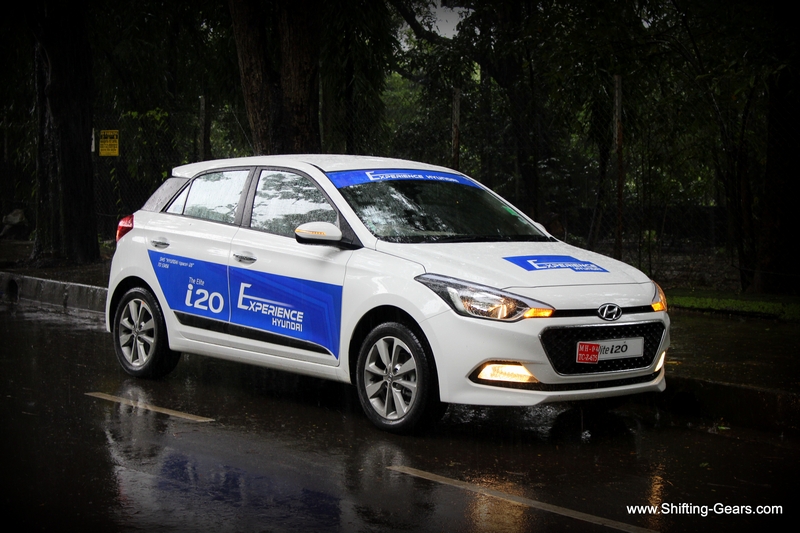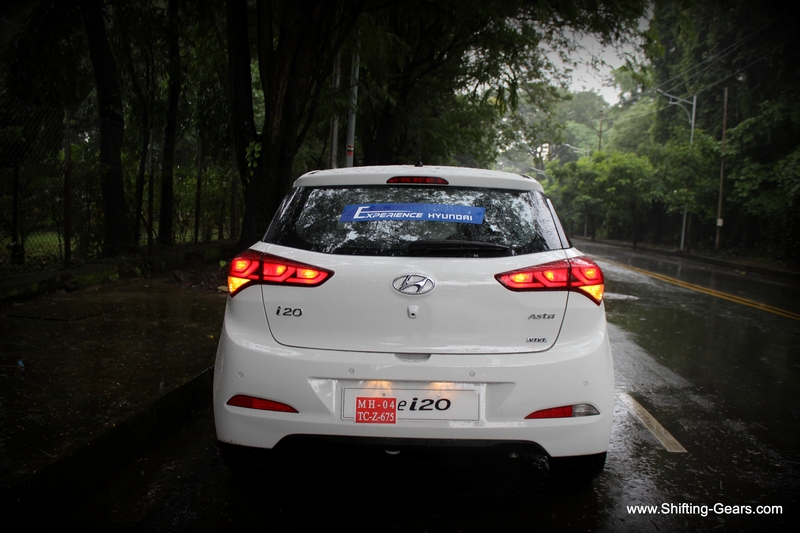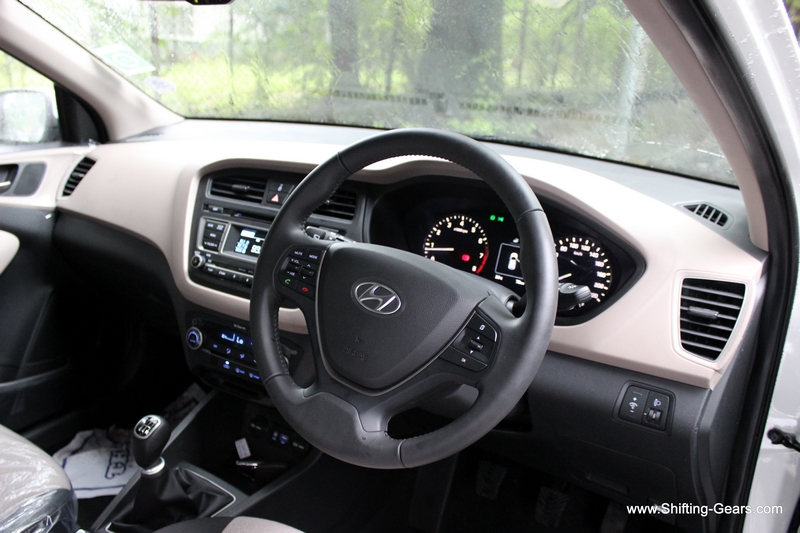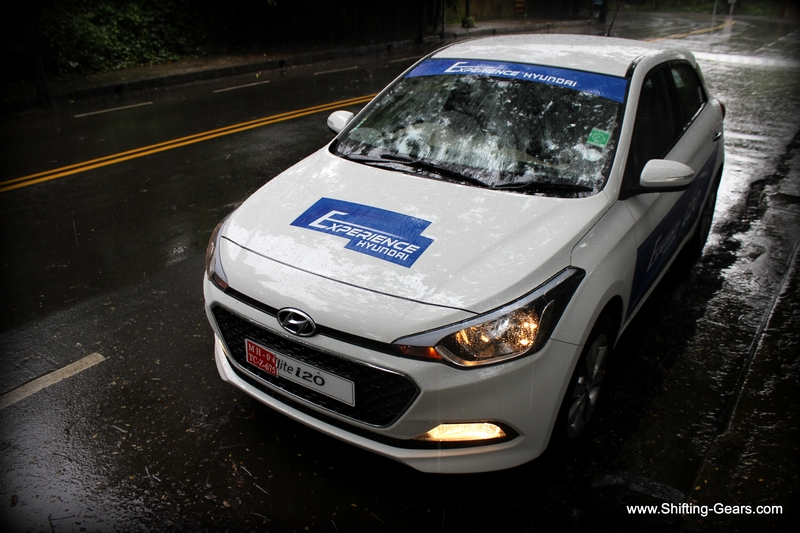Hyundai had launched the 1st generation i20 hatchback in the Indian market in December 2008. In terms of size and specs, the i20 was basically a replacement for the ageing Getz hatchback. However, Hyundai planned to sell both the cars side by side, with the newer one demanding a premium price. Just like they did with the Accent and Verna. Hyundai never expected a premium hatchback to be as successful as it turned out to be. The primary reason for the car to be built in India was to milk the cost advantage and export the car via the CKD route to the European markets. Going forward, the Getz was finally discontinued in 2010 sighting poor demand, and better response to the more expensive i20.
Globally, the i20 is available in a 3-door and 5-door hatchback version. In India, it was clear that the i20 was pitched above the Maruti Swift when it was launched. The only competitor back in the day was the Honda Jazz, which, with it’s over ambitious pricing strategy during the launch phase, instantly doomed in the market. Hyundai is known to offer the cars with features loaded to the gills, and the i20 was no exception. With all the bells and whistles the hatchback segment had never seen, the i20 ticked all the boxes for the target audience, and even those who weren’t looking to buy it, eventually found more value in the product offering. More than 3 years post the launch of the first gen i20; Hyundai gave it a facelift with the fluidic design treatment and called it the i-Gen i20. The facelift gave the car a new face and other styling changes on the exterior as well as interior. Hyundai also rectified a few issues reported by customers with the facelift. The past six months average sales for the i20 are at 3358 units, and this is inclusive of the discontinuation phase. Not bad at all, isn’t it? For a car which the manufacturer never really planned to be an India specific model. And now, the next generation i20 has made its global debut in India. Not just that, visit the Hyundai website and click on the showroom tab, only the i20 will show up red while the other cars are in a dull silver shade thumbnail. Shows how much relevant the car is in the Indian market now for Hyundai.
Exteriors:
The i20 is now all new, and the design language is now termed as the Fluidic Sculpture 2.0. The car is now 3,985mm long, 1,734mm wide, 1,505mm tall and has a wheelbase of 2,570mm. That is actually a deficit of 10mm in overall length. Width however has gone up by 24mm. Height of the car remains the same, but the wheelbase has been increased by 45mm. Boot space available has also gone down to 285 litres from the previous 295 litres. Line up the facelift i20 side by side the new Elite i20, and where the facelift already had stepped the game up from the very Korean face of the original i20, the new Elite i20 is very European to look at. Long flat bonnet, increased width of the car, swept back headlamps, and toned down fluidic styling makes the car appear (it actually is) wider than its predecessor. The most noticeable change on the Elite i20 is the large hexagonal, honeycomb front grille. It gets a chrome surround and is almost flat and very imposing. If you look closely at the facelift version, the bumper had a hexagonal design curve with air dam below, but here, it full size grille. Above this, there is a thin, chrome slat-less, cut out separating the upper and lower bumper with a Hyundai logo in the centre. This cut merges with the turn indicators on the headlamps on either side. Headlamps have now been changed from the previous twin pot units to a single lens doing the duty for both high beam and low beam. The swept back headlamps on the Elite i20 get automatic illumination. Helpful for times when you enter those expressway tunnels. Fog lamps are trapezoidal units looking very similar to the Volkswagen Polo. What the owners would miss are the LED DRLs which were a hot favourite on the outgoing model. A thin black plastic section runs all the way on the bumper connecting the fog lamps on either side. The car gets a small skirt-like drop below the fog lamps to add to that sporty look. The bonnet has very subtle character lines and the shut line is on top of the Hyundai logo, and not at the Hyundai logo.
When viewed sideways, the Elite i20 looks low slung compared to the old i20, however, the height is still the same. Blackened B and C pillars render a sporty look. Shoulder crease line is a little less defined now and runs all the way to the headlamp starting from the tail lamp. The new i20 also gets side mouldings on the doors, which the previous i20 did not. These units however are not as chunky as seen on the Grand i20. Do note this is an all-new car and it is evident from the doors as well, which are now completely different. But the glass section now at the rear seems to have reduced. The car gets 16″ dual-tone diamond cut alloy wheels, which is the current trend in the segment. Door handles are in chrome and get request sensors for the true keyless entry and go. ORVMs are redesigned too and get slimmer LED turn indicators. Even from the side, the front fog lamp, headlamp and tail lamp are noticeable, which would help in lateral visibility during the night.
At the back, just because of the small rear windscreen and the elongated tail lamps, we found the car to resemble to the Alfa Romeo Giulietta. Both cars (old and new i20) side by side, back to back are significantly different. There is no element of similarity here. No unnecessary crease lines. It’s a boot lid and that’s it. Clean. Windscreen now fits the boot lid from left to right, and appears frameless. Tail lamps are 3-step units which look very premium. The unique setup will clearly indicate a Hyundai in front of you when seen in the night. Although they look like one, these aren’t LED units. On the extreme ends, below the 3rd step of the tail lamp sits the turn indicator. The car gets a single reverse lamp, on the RHS of the bumper. Rear fog lamp (red) is now placed on the LHS of the bumper. Reflectors on the bumper are placed next to the fog lamp and reversing lamp and are chunkier than before. Lower end of the bumper gets blackened treatment, and the extreme ends drop down to appear as a sporty body kit. Rear view camera isn’t the cleanest integration this time though. It sticks out below the Hyundai logo on the boot lid. It was neatly tucked under the Hyundai logo on the previous version. From the looks of it, you would assume there is no button to open the boot from outside, but slip your fingers through the thin cut out, and you will find the button to pop the boot open. Parking sensors are body coloured. No boot lid mounted spoiler on the Elite i20. Antenna is the same, not so body cover friendly tall unit. Rear wash and wipe available on the higher variants.
Interior Front:
With the key in your pocket (on those equipped with the smart key) just walk to your car and press the black request sensor on the door handle. That’s it. No taking out your key to unlock the car. Sheer convenience and adds to that feel good factor. The interior colour scheme has changed from beige and brown to beige and black now. Dashboard has been completely redesigned and is not as curved at is used to be all these years. It has a relatively flat top and a relatively flat face. Centre console in finished in black and runs towards the right to house the instrument cluster in black as well. Top of the dashboard is also in black and the lower end as well. Only the face of the dashboard gets the beige treatment. Steering wheel is different from what we saw in the previous i20, but is similar to the Grand i10 and the Xcent except for a few changes. On the Elite i20, there is an additional chrome insert around the horn pad and the steering mounted controls have a different layout. The steering feels good to hold and there are contours to rest your thumb as well. Steering controls are at the right spot, however, the horn pad we felt was slightly hard to press. Instrument cluster now parts ways with the blue illumination and is now all black with white backlit. The MID which was placed on the centre of the dashboard earlier, has now been moved between the speedometer and tachometer in the new model. This is a good thing since you don’t have to take your eyes off the road for long. Temperature and fuel gauge are placed in the tachometer and speedometer respectively with digital bars displaying the data. The start-stop button is placed to the LHS of the steering wheel and has a chrome ring to it. Control stalks are now of an even better quality plastic than it was before. They feel like they would last the distance with just one touch. Wipers get intermittent speed adjustment. Headlamps are automatic and the front and rear fog lamp switch is thoughtfully placed on this stalk rather than on the dashboard.
The boring centre console in silver is now gone. The black trim highlights the stereo system. The display screen size of the head unit is almost identical to the Xcent / Grand i10. The button layout is nice and clean and the XL size buttons are easy to operate. Stereo system gets 1GB storage capacity, Aux-in, USB, Bluetooth and CD compatibility. Above this, you will find the central locking and the hazard light button. Till you centrally lock the car, a blue light keeps flashing on the central lock button. The car gets fully automatic climate control, and AC vents work effectively in directing the flow. Monsoons might not be the best times to test the AC abilities, and we will let the users talk more about this with passing time. Placed below the AC control, is a small storage spot. You will find two charging points and aux-in and USB slots here. It is an ideal spot to park your smartphones here.
Seats carry forward the dual-tone colour scheme. The sides and the back are in black, while the centre portion is in beige. The beige portion will be a pain to be kept clean in the long run. Seats have a bucket like effect and provide good support. The lateral support especially is spot on. Driver seat fore and aft adjustment, along with the seat height adjustment ensures a good driving position for both the taller and shorter drivers. The front passengers (mainly for the driver) gets a centre armrest with a storage bin underneath. The unit is not too long and those with shorter arm length won’t find it very comfortable changing gears with their arm resting here. There are two cup holders for the front passengers next to the handbrake, apart from the two bottle holders on the front doors. Gear lever with chrome surround on the gear knob and around the gear console look good. Driver also gets a dead pedal, and the ABC pedals are well spaced out as well. Electrochromic rear view mirror saves you from the annoying glare from the vehicles behind with their high beam on. The mirror also houses the display for the reversing camera with adaptive guide lines which show you where exactly your car is backing up based on the steering input. A software glitch we noticed here was that the display showed up inverted at times.

Rear seats try and provide that little extra under thigh support with the subtle extensions on either sides (not for 5th occupant). Even the rear seats have a bucket like feel for two, while the 5th occupant has a slightly raised seatback.
Interior Rear:
With a wheelbase increase of 45mm, the cabin space inside the Elite i20 has definitely increased. Even the rear seats have a bucket like effect for the two passengers on either side, while the 5th passenger has a raised seatback. Under thigh support though not 100%, is on acceptable levels. Headroom is available in abundance and there will not be a problem for passengers of 5’10” of height at all. Window sills however are on the higher side and run almost to your shoulder level. They actually merge with the seatback height. Overall room is much, much better than the segment best Swift. Rear passengers get two bottle holders on the door pads and a single seatback pocket behind the passenger seat. Rear AC vent helps in maintaining cooler temperature at the back on a hot sunny day. Don’t expect the blow from this vent to be a chiller though, it is strictly average. No power outlet below the AC vent as seen on the Grand i10. Boot space is down by 10L to 285 litres. Still, it is very accommodating by hatchback standards. The rear seats also have a 60:40 split to add to the practicality.
Engine & Driving Dynamics:
The Elite i20 is powered by both, a petrol and a diesel engine. The petrol motor is a 1.2L kappa series engine with dual variable valve timing pumping out 82 BHP of power @ 6,000 RPM and 115 Nm of torque @ 4,000 RPM. The diesel motor is a 1.4L U2, CRDi engine pumping out 89 BHP of power @ 4,000 RPM and 220 Nm of torque @ 1,500 – 2,750 RPM. Both the engines are very refined and the NVH levels are one of the segment best. Where the diesel clatter is slight audible before it reaches the ideal operating temperature, the petrol motor is very smooth on idle, almost like it’s turned off.
The petrol motor will scoot you around in the city with ease. Shorter gear ratios help you get away with slow moving traffic condition and the city driveability therefore is acceptable. But the power on tap is strictly average. For a car which would cost you 7.5 big ones (petrol), the performance is underwhelming. For the size, the performance does feel a notch below. Enthusiasts will not be very happy behind the wheel of the petrol Elite i20. However, if you’re of the sedate driving category, the car will perform the A – B commute effortlessly. We repeat, the performance is not too bad, but what we come to expect of a premium hatchback on the performance front, the 1.2L kappa lacks the punch. Highway overtaking will surely need preparation and a couple of gear changes.
The diesel motor undoubtedly will be the pick of the lot. Not only because of the power and torque figures and the better fuel efficiency, but also because the car has slightly more punch when you floor that pedal. Of course, 105 Nm of torque more over the petrol kicking in 2,500 RPM below will be evident. Throttle response is adequate and the torque kicking in at a low 1,500 RPM takes care of the city crawl. Turbo lag will not be too much of a problem. It is well controlled and the diesel motor responds with average frontal movement. Power delivery is very linear unlike the turbo spool felt in the Maruti Swift, which a few customers actually like. 6th gear helps in effortless highway cruising, and will also bring in more miles per litre of fuel you use.
Gear shifts are smooth and the gear gates are well defined too. Majority of the owners will like the easy operation of the gear lever. Short gear throws and a light and short clutch travel also aids city driveability. Ride quality is now much superior to the previous i20. The bounciness has been significantly reduced. However, it is not as stiff say like a Volkswagen Polo. Body roll also is well controlled. The car can comfortably cruise on high speeds now without being worried about the surprises thrown during an emergency maneuver. Steering feedback is also now slightly better than before and it also weighs up at high speeds. Do note, the electric power steering can never deliver the sheer pleasure of a pure hydraulic. Steering is direct and very responsive to the lightest of inputs. One needs a firm hand on high speeds. On the other hand, the light steering is a breeze to use in the city conditions. Parking the car is made easy, and women especially will appreciate this. The Elite i20 rides on 195/55 R16 patch tyres on the Sportz O and Asta variants while it gets a 185/70 R14 patch tyre for the Era, Magna and Sportz variants.
The previous generation i20 used to come equipped with both front and rear disc brakes. The Elite i20 however comes with a disc setup only at the front and a drum at the rear. While braking capabilities were adequate, we wonder why they would remove the feature which made them stand apart from the others in the segment. Forget just the B2 segment, some 30 lakh SUVs still come with a drum brake setup at the rear.
Overall, the Elite i20 steps up the game in the premium hatchback segment much before Honda brings in the Jazz and is going to try and set segment standards here. The car is roomy, has best in class features, top notch fit and finish, but at a price. The Maruti Swift still leads the segment by a huge margin. Going by the success of the old i20, there is no doubt that even the Elite i20 will sell in good numbers. With Hyundai working on the ride and handling, we will give it a brownie point irrespective of the identical engine performance being carried forward. We expect an automatic variant to be rolled out in the near future, given that the Polo will be available with the TSI and the Honda Jazz also has a possibility of bringing in the CVT doing the duty in the Honda City. The car has lost out certain features like the popular LED DRLs, rear disc brake set up, rain sensing wipers, only dual front airbags as opposed to 6 offered before etc.; still, the car is a compelling product in the Indian hatchback space.
Click here to check out the Hyundai Elite i20 photo gallery.






